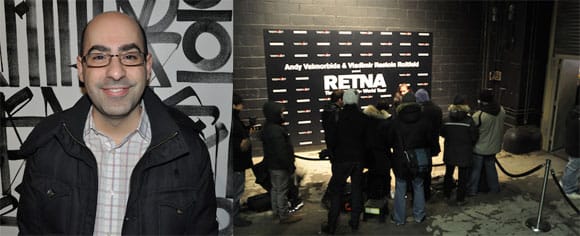The Fashionable Wallpaper of Retna
Last night's opening of art by the LA graffiti artist Retna was more of a fashion event than an art show. Bizarrely titled The Hallelujah World Tour, the artist's all-over calligraphic style was ill served by poor curatorial decisions like a dense hanging that reduced the lines to visual wallpaper f
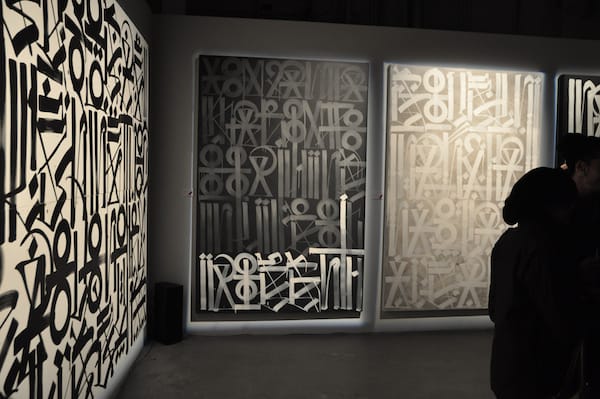
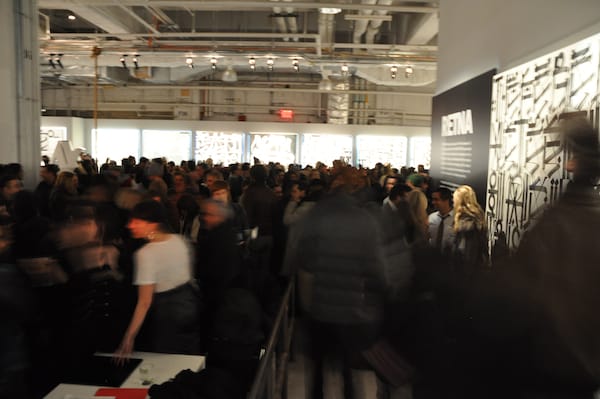
Last night’s opening of art by the LA graffiti artist Retna was more of a fashion event than an art show. Bizarrely titled The Hallelujah World Tour, the artist’s all-over calligraphic style was ill served by poor curatorial decisions like a dense hanging that reduced the lines to visual wallpaper for a posing group filled with mad-hatter-wannabes and fashionistas.
In an interview with Blackbook earlier this week, Retna suggested that the work he’s showing in New York was a special selection:
Each city gets their own batch of paintings. I think New York is a strong city so I give you the stronger shit, the stuff that means the most to me. It has to do with death, pain, and struggle. Friends of mine who have been killed or killed themselves. I give New York what I expect New York to give me back.
Unfortunately, none of that emotional promise comes through, and the canvases seems more controlled than emotive, and less developed than work he’s shown elsewhere. The group of paintings all feel too derivative of mid-20th century New York School paintings — think Bradley Walker Tomlin and Adolph Gottlieb — and their love of strong line, inspired by calligraphy, floating on atmospheric backgrounds. Retna’s canvases aren’t ambitious works to begin with, and the hanging did the paintings no favors: they were strangely lit with a blue haloing effect that made them feel more colorless than they should have.
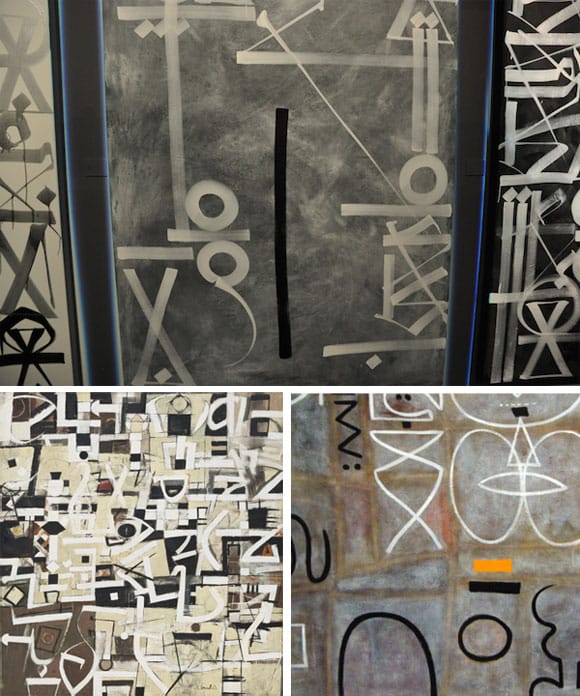
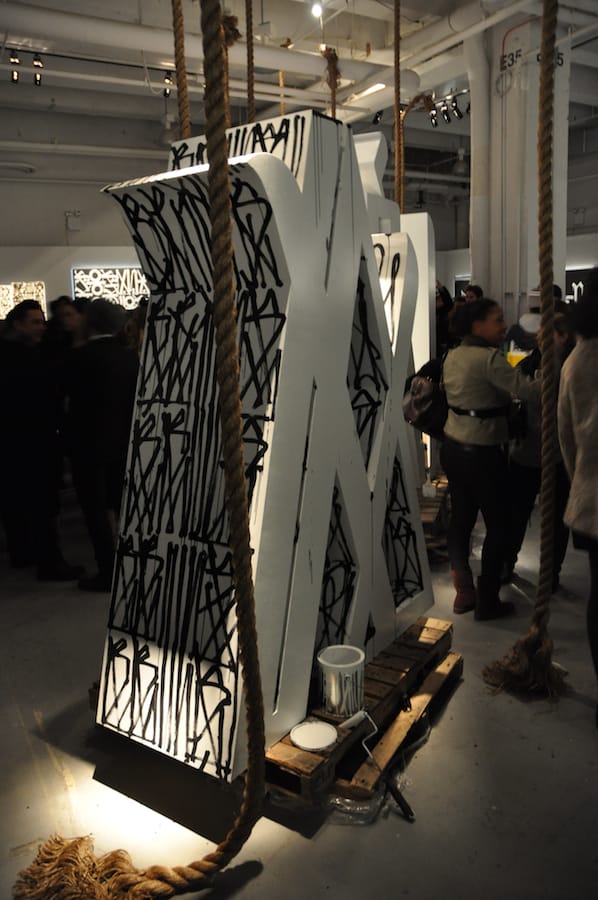
The most interesting examples — maybe the most promising — in the show were the large wooden sculptures sitting in the middle of the warehouse space. Equal parts sci-fi alphabet and Hebrew lettering, they were framed by hanging ropes and surrounded by paint cans and ink bottles that reminded me of Mr. Brainwash’s over-designed aesthetic. They look like they should be part of a store display – think Urban Outfitters — rather than part of an art installation. The works didn’t seem carefully thought out as much as accessorized, and perhaps even readied for a fashion shoot. RJ’s Vandalog sees the latest batch of works as an “definite evolution,” but I don’t see any forward movement, mostly sidestepping of any clear direction.
I think Retna is talented but this show won’t have much appeal for those beyond the fashion world, which tends to have an affinity for graffiti’s narrative-less banter, and graffiti fans, who will be drawn to the works because of their worship of linear play. The beauty of Retna’s work from my perspective is in the density of his compositions that stretch easily beyond the frame and whip across surfaces to transform fields into visual texture — see some examples at Vandalog. His collaborations with El Mac are his most well-known and they represent what he does best: offering a diffused backdrop. In the spotlight and in an art gallery-like space, they don’t really have much to say.
Retna’s Retna: The Hallelujah World Tour continues until February 21 at 560 Washington Street, Bay 37E, Far West SoHo, Manhattan
